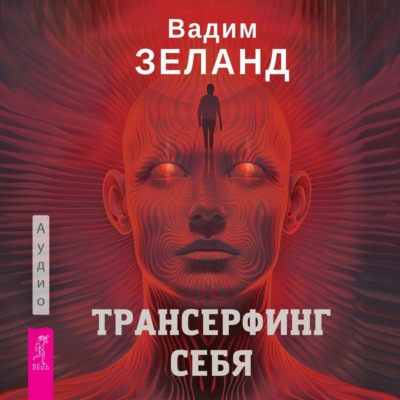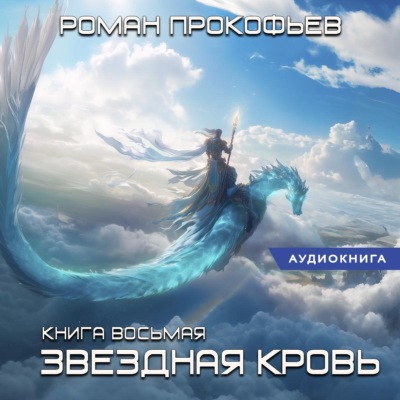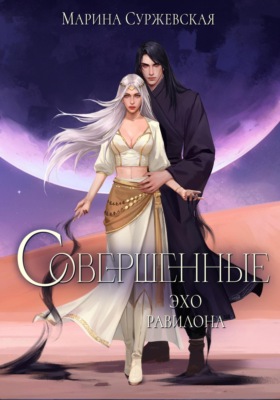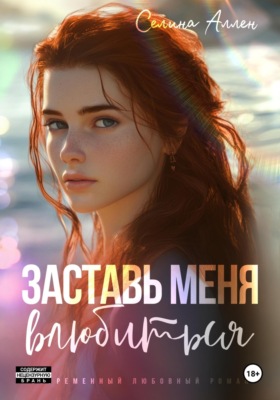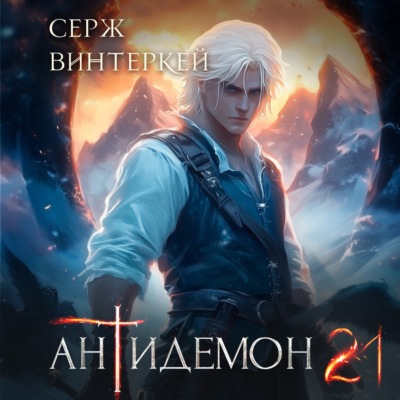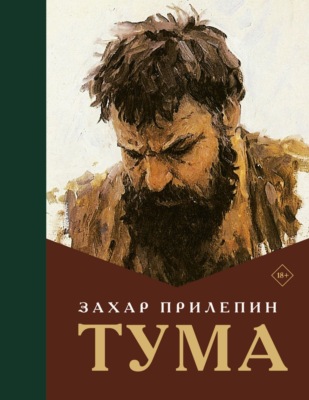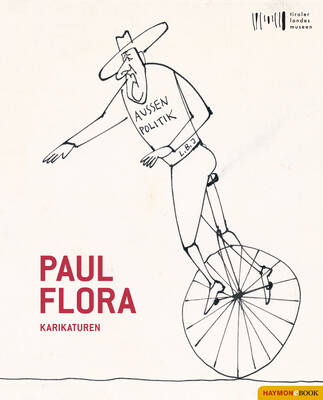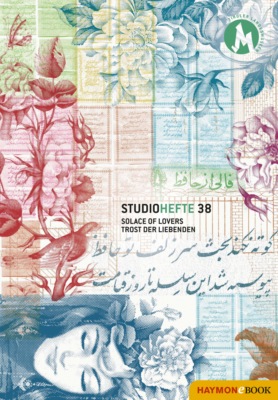Loe raamatut: «Solace of Lovers. Trost der Liebenden»
STUDIOHEFTE 38
SOLACE OF LOVERS
TROST DER LIEBENDEN
TIROLER LANDESMUSEUM FERDINANDEUM
16.10.2020–31.1.2021

CONTENTS
ON “SOLACE OF LOVERS”
Peter Assmann
PREFACE
INTRODUCTION TO THE EXHIBITION
Yashar Samimi Mofakham, Tarlan Rafiee
COMMENTARY TO POLAK’S “THE AUSTRIAN TEACHERS IN PERSIA”
Yashar Samimi Mofakham
THE AUSTRIAN TEACHERS IN PERSIA
Jakob Eduard Polak
LIKE THE WIND IN THIS WORLD ...
Peter Leisch
FIVE REALMS OF BEING
A discourse on the Persian poetical world
Dariush Shayegan
THE PERSIAN POETIC SOUL
A brief on Iranian Art
Tarlan Rafiee, Yashar Samimi Mofakham
THE ARTISTS
Yashar Samimi Mofakham
MAZDAK AYARI
REZA BANGIZ
NARGESS HASHEMI
FARAH OSSOULI
TARLAN RAFIEE
JAZEH TABATABAI
PARVIZ TANAVOLI
APPENDIX
GLOSSARY
SELECTED BIBLIOGRAPHY
THE PUBLICATION
THE EXHIBITION
ACKNOWLEDGEMENTS
IMAGE CREDITS
IMPRINT
ON “SOLACE OF LOVERS”
In any attempt – in the spirit of a “lover” – to approach a deeper cultural understanding in connection with Iran, one does well to bear in mind that the concept of the nation, especially in the European tradition, is less than helpful. Iran must rather be seen as a continent, offering an immense diversity of landscapes, temperatures, people, nationalities and even religions, but also striking aspects of a common cultural “conjoinedness”. Within this interpretation of the concept, this “continent” is based above all on a common culture of language and a deep love and reverence for its most creative aspects in the form of literature, a literature that connects the Iranian Arab on the Persian Gulf with the bazaar trader in the Iranian capital Tehran. As a matter of course they are familiar with the most prominent poets writing in Farsi, the language of Iran, which reaches far beyond the country’s present borders and is the medium of the history of spiritual and physical travel between the Far East and the Middle East. Marco Polo (1254–1324), for example, spoke Farsi and was therefore able to provide Europe in the High Middle Ages with astonishing insights into the Far East. Whether he did so on the basis of first-hand observation or well-told stories is not so important, since Iranian life is always connected in all its diverse aspects with the broadening use of the Iranian language.
Perhaps more so than any other language, the literature of Iran is intensively concerned with human relationships, including relationships between individuals, with nature and with different aspects of the divine. Again and again it is love that provides the drive, the process and also the goals for the wonderful use of language. This language as art also guides the visual arts. For centuries, the pictorial element has been a connecting experience shaped by calligraphy, which is seen as an art form in its own right, by splendid ornamentation and by illustrations as a narrative accompaniment. Notwithstanding the truly monumental aspects – a visit to the royal city of Isfahan, for example, has astonished travellers for centuries –, this is an artistic tradition in which there is a consistent link to the individual, to personal encounters, to the intimate moment, which refuses to be overwhelmed. Like so much else from Europe, Iran would have to wait until the 19th century to understand the concept of the picture as a self-contained commodity.
Significantly enough, the following lines by the poet Saadi (ca. 1213–ca. 1291/1292) from his “Rose Garden” are to be found in the lobby of the UN building in New York (translation by M. Aryanpoor):
“Human beings are members of a whole,
In creation of one essence and soul.
If one member is afflicted with pain,
Other members uneasy will remain.
If you have no sympathy for human pain,
The name of human you cannot retain.”
It was also this fascination with the compelling nature of poetic language that first enabled a European audience to gain a deeper insight into these worlds in modern times. In his “West-Eastern Diwan” (published in 1819 and again in an extended version in 1827), Johann Wolfgang von Goethe (1749–1832) was inspired not only in linguistic terms by the work of Hafez (ca. 1315–ca. 1390), probably the most significant poet in the Farsi language. An Austrian element in this artistic enterprise was provided by the poetess Marianne von Willemer (1784–1860), who was born in Linz and whose texts Goethe incorporated into the work without mentioning her name. On the anniversary of the death of Hafez, who died so many centuries ago, thousands of people still flock to his tomb in Shiraz every year. Incidentally, this city not only lent its name to the eponymous wine, it was also the birthplace of this drink, which even Ayatollah Ruhollah Khomeini (1902–1989) praised in his early poems.
The deeper their enquiry into this “continent” of Iran, the greater the number of apparent contradictions found by Western travellers, who are confronted yet again with the huge discrepancy between the propagandistic spin of Western media and the reality to be experienced on the ground. One particularly striking aspect of this is the natural hospitality, which manifests itself in so many ways. A traveller in Iran is borne by the language of love and the solace of a life on a search – an experience that has been described so vividly again and again in a wide variety of travelogues.
The mission of this exhibition organised by the Tyrolean State Museums is to communicate a little of this fascination in as direct a manner as possible. It is not the many Iranian exiles whose art is presented here, but artists who have been living in the country for decades and developed their art there. The selection deliberately includes many artists whose names are unfamiliar to even the progressive expert, and these names represent artistic positions that require careful exploration. That is the role of our exhibition and this book. Our special thanks go to the curators Tarlan Rafiee and Yashar Samimi Mofakham, whose great personal commitment has made this project possible with the very substantial support of the KLOCKER FOUNDATION. We are also grateful to the authors of this accompanying book, who have joined us as travel companions on our journey to the Iranian “Solace of Lovers”. There are still so many places to visit on the cultural “continent” of Iran.
Last but not least, this Iranian journey has also led us to our own collections: the Artuqid bowl is a highlight of the Mediaeval Collection at the Ferdinandeum, and in the Library Collection, our “Iranian eye” discovered a series of 19th century illustrations. And the journey is not over yet.
Peter Assmann
“The first creation of all things, the pearl of intellect was endowed with three qualities, three children named Beauty, Love and Sorrow. A luminosity appeared in him when the Beauty gazed upon himself, and he smiled. From that smile thousands of cherubim appeared. Love, the middle brother, was so intimate with Beauty that he could not take his eyes from him and was constantly at his side. When Beauty’s smile appeared, a consternation befell Love, who was so agitated that he wanted to move. Sorrow, the youngest, clung to him, and from his clinging the heaven and earth appeared.”
Selected text from “Reality of Love or Solace of Lovers”, an allegorical treatise by Shahab al-Din Suhrawardi (1154–1191)
PREFACE
In this publication the term “Iran” has been used to define a country with clear geographical borders, the inhabitants of which are called Iranians (just as they are in the Farsi or the Persian language). Wherever reference is made to the culture of this country, including its poetry, miniatures, paintings, carpets and other art forms, and whenever there is mention of its soul and culture, the word “Persian” has been used in order to correspond with non-Persian texts of the past. The poets of this land are called “Persian poets”, which is a more accurate translation of the expression used in Farsi even today. But in the case of its modern and contemporary artists and authors, who exist and developed their craft under a modern definition of Iranian culture and modern Iran, the term “Iranian” has been used instead. In instances where reference is made to linguistic or cultural boundaries of Iran that surpass the geographical and political borders and are known as Greater Persia, the term “Persia” has been used. For instance, the “Shahnameh” is identified as the national epic of Persia.
An attempt has also been made to avoid using standard artistic and philosophical terms, many of which are academically common. Many Persian intellectual and philosophical concepts have often been translated into their closest western equivalents. And even though we cannot offer an alternative to this practice we believe that in this process of trans lation, the Persian term is reduced in order to fit within a global terminology. In discussing philosophical points of view or schools of art, rather than relying on a common terminology we have attempted to describe the concept instead, even though it is likely that the reader will associate it with a familiar term in his mind.
One example of this is the translation of names and titles, such as the word “Sha’er”, meaning someone who writes poetry (“She’r”), as described in detail in the text “The Persian Poetic Soul”.
Another example is the word “Haqiqat”. In English, this is translated as “reality and truth”, and we were limited to using these two terms interchangeably. In Persian philosophy and mysticism (both pre- and post-Islam), however, the word “Haqiqat” can imply multiple meanings in one sentence, from something that exists but remains unseen (such as the creator) to material being.
These are difficult but exciting challenges, yet we believe we must all address this challenge in order to facilitate a clearer form of intercultural communication.
The Curators
INTRODUCTION TO THE EXHIBITION
Yashar Samimi Mofakham, Tarlan Rafiee
“The truth was a mirror that fell to the earth from God’s hand and broke into myriad pieces. Each person took a piece, saw himself reflected in it, and believed he held the truth. Yet the truth was scattered among all.”
Rumi, The Fihi Ma Fihi
The current exhibition gave us the opportunity to review travelogues from recent centuries that related to Iran in one way or another; some were written by Iranians about their various observations in their travels abroad, and others were written by foreigners travelling to Iran. Regardless of their initial intentions, all of these texts communicate a piece of the “truth” as experienced and interpreted by their authors.
And yet “truth” is an abstract concept. The reality or truth that I perceive about myself is a piece of a puzzle that defines me, shapes my relationship to my context and connects me to the surrounding world. Another piece of the truth that defines me is from the perspective of the “other”, what they see and how they perceive this depending on their own context and background.
Is it possible to reach a single definition of the truth about someone, and more generally about their society and everything that relates to them?
Travelogues are amazing resources when it comes to understanding others and ourselves, because they offer us a perspective about our life and culture that falls beyond our field of vision. But when the individuals who are the subjects of travelogues are not given the opportunity to decipher some of their complexities and explain certain things about them, then the travelogue will remain a subjective interpretation and its use as a source of reference will be problematic.
There is a story common to many cultures, and a version of this story is also found in classical Persian texts. The story describes a group of blind men – or men in a dark room – using their sense of touch to describe a creature (elephant) they have never seen before. It may be possible to gain a general understanding of the elephant by putting all of their individual descriptions together. But if each piece of information is relied upon in isolation, the unseen creature is reduced to a rug, a downspout, a column, a rope, a trumpet or a tree. Reading travelogues helps us understand how far we have succeeded in presenting ourselves to the other. Perhaps it will lead us to offer the other the piece of mirror we hold in our hands and gain a better understanding of one another by putting all these different pieces together.
Art exhibitions, and in their broader sense international art/cultural events, are more than an opportunity for experiencing works of art; they are occasions that allow us to find ourselves reflected in the mirrors of others. These events are like travelogues sans the travel. They give the viewer an opportunity to travel to another world while the hosts – who are also guests – describe their travels and the context by communicating with their visitors without an intermediary.
***
The first agreement between Safavid Persia and the Habsburg dynasty of Austria was signed in the 16th century, at a time when both countries shared certain interests against the Ottomans. Theirs was a short-lived relationship, and until the 19th century the two countries did not have any serious ties except for a few instances of diplomatic relations. During these years a number of Persian texts were translated into German in Austria, and a section in the Oriental Academy was dedicated to the study of Persia and the Persian language. But the first instance of a deep understanding of Iran and its culture and history by Austrians and other German-speaking countries can be found in the undertakings of Joseph von Hammer-Purgstall. It was through his efforts that the Persian Studies section in the Austrian Academy of Sciences gained a scientific structure that continues to exist to this day.
The first German translation of Hafez’s complete book of poetry – which is also the first instance of the translation of these poems into a western language – was by Hammer- Purgstall. This translation later inspired Johann Wolfgang von Goethe’s masterpiece, “West-Eastern Diwan”.
In 1848, Naser al-Din Shah Qajar of Persia and Franz Joseph I of Austria were both crowned kings at the age of 18, at a time when Europe was in the midst of revolutions and Iran was undergoing deep transformations that would later lead to the Constitutional Revolution.
Significant relationships were formed between the two countries during the reign of these two kings. The young Persian king and his prime minister, Amir Kabir, were interested in modernising the country and believed they could shorten this path by following in the footsteps of Europe. It was thus that the first Austrian team arrived in Iran at the invitation of Amir Kabir.
Amir Kabir planned to establish Iran’s first polytechnic centre of higher education, Dar ul-Funun, and its teachers as well as a number of military trainers were to be hired from neutral European countries. It was for this purpose that, in 1851, Jan Dawud Khan (David Davidian), the Persian-Armenian interpreter of the court, was sent to Austria, a country which did not have any direct political intentions in Iran. He was sent there to consult with Heinrich Alfred Barb, the head of the Austrian Oriental Academy.
A comprehensive description of this trip can be found in Jakob Eduard Polak’s lecture, which is included in this publication under the title “The Austrian Teachers in Persia”. Every member of the visiting team performed a great service in familiarising the two countries with each other, but Polak played the most important role in this regard.
Polak can be considered the father of modern medicine in Iran. He established the first modern hospital in the country and trained the first Iranian medical students. Since Polak was interested in communicating directly with his students and other people, he learned the Persian language very quickly. Aided by his students, he also chose Persian and Arabic equivalents for many French, German and Latin medical terms, many of which are still in use today.
Polak became the Iranian king’s official physician as well as his French teacher, and for his services he received the title of “Muqarrab al-Khaqan”, one of the highest orders bestowed in the Persian court. Polak also left behind many important writings both in Farsi and German about his journey and Persian studies.
In the introduction to his travelogues Polak writes, “In this text, I have tried to come up with a description of the character, the customs and the way of living of one of the most interesting people in this world. [A description] of a people whose glory is routed in actions of a long-gone past, that has not yet aged, but is rather destined to play a not so unimportant role in the future history of the world and civilisation.”1
Another Austrian who played an important role in Persian-Austrian relations was Albert Gasteiger Khan from Innsbruck. Albert Joseph Gasteiger learned the Persian language in Vienna, and in 1860, on behalf of the Iran government, Jan Dawud Khan hired him as an engineer in road and railroad construction, and also as a teacher at Dar ul-Funun.

Julie Haftner, Jakob Eduard Polak, 1860–1867, black-and-white photograph, Österreichische Nationalbibliothek, Bildarchiv, Vienna / Julie Haftner, Jakob Eduard Polak, 1860–1867, Schwarz-Weiß-Abzug, Österreichische Nationalbibliothek, Bildarchiv, Wien

Naser al-Din Shah Qajar, Jakob Eduard Polak, 1854, black-and-white photograph, Österreichische Nationalbibliothek, Bildarchiv, Vienna / Naser ad-Din Schah, Jakob Eduard Polak, 1854, Schwarz-Weiß-Abzug, Österreichische Nationalbibliothek, Bildarchiv, Wien
Gasteiger served in Iran for more than two decades and received the rank of “Mir-Panj” (General), as well as the titles “Khan” (a Persian nobility title) and “Mohandes Bashi” (head of engineers), for his services in building roads and training Iranian engineers. From that point on, he was known as General Albert Joseph Gasteiger Khan both in Austria and Iran.

Persian miniatures, brought to the Tyrol by Albert Gasteiger Khan, 2nd half of the 19th cent., watercolour on paper, various dimensions, Tiroler Landesmuseum Ferdinandeum, Bibliothek / Persische Miniaturen, nach Tirol gebracht von Albert Gasteiger Khan, 2. Hälfte 19. Jh., Aquarell auf Papier, verschiedene Maße, Tiroler Landesmuseum Ferdinandeum, Bibliothek
Henri Moser, a Swiss adventurer who travelled to Iran during those years, wrote the following about Gasteiger Khan: “[...] he has a box filled with medals and orders, but he never wears any on his chest. He is unlike most Europeans, who put on their European suits in Iran and adorn them with all sorts of golden medals and decorations, then convert to wearing traditional Persian costume upon returning to Europe.”2
Gasteiger Khan visited the Shah of Iran, Naser al-Din Shah, wearing local dress and a Tyrolean hat, and after learning of his capabilities, the king awarded him the title of “Engineer Officer” and hired him to teach at the military school in Dar ul-Funun.
When he returned to Austria, Gasteiger Khan donated part of his art collection from Iran to the Tyrolean State Museum Ferdinandeum. Among the pieces he donated were a number of drawings and paintings from the Qajar era, some of which are included in the current exhibition.
The Iranian constitution was signed during the reign of Mozaffar ad-Din Shah Qajar in 1906, when Hammer-Purgstall, Polak, Gasteiger Khan and other Austrians who had served in Iran were already deceased. This marked an important step towards modernisation and gaining access to civil rights (even though we still have a long way to go to reach the goals of the constitutionalists). Unfortunately, none of those individuals, who had played a great role in rebuilding and modernising Iran, were able to witness this great turning point. Nevertheless, Iranian history will always value their contributions, especially in their services to Dar ul-Funun and in introducing Persian and Austrian cultures to each other.
***
Today Iran is an entirely different country from the land the first Austrian convoy encountered. It is a country where people dress differently than before, restaurants serve different foods, garden villas have been displaced by skyscrapers and crowded freeways and automobiles have replaced horses, carriages and narrow alleyways.
But despite all these changes, under the surface Iran still has the same cultural and historical roots that its poets, authors and intellectuals have described over decades and centuries. Iran is still the land of Hafez, Saadi, Mowlana, Ferdowsi and Khayyam. Iranians’ eyes still fill with proud tears when they read Ferdowsi; they still fall in love with the poetry of Hafez; they contemplate Saadi’s verses, lose themselves in the lines of Mowlana and laugh out loud at the universe with Khayyam.
Iran is still the land of flowers and nightingales, the land of heavenly gardens and epic love stories; the people of Iran are the same people from among whom many poets and lovers have appeared throughout history.
Iran is the land where Sheikh Abu al-Hassan al-Kharaqani, the heir of Khosrowani wisdom or ancient Persian mysticism, had the following inscription on the entrance to his monastery: “Whoever knocks on this door, feed them and ask not of their faith, for if they deserved a Soul from their Creator, they certainly deserve a loaf of bread from Abu al-Hassan.”
Iran is the land of lovers and its heritage belongs to everyone.
Iran is still the land of poetry, wonders and hope; the land of beauty, love and sorrow.
The exhibition “Solace of Lovers” is an offering of fragments of a mirror. This exhibition does not claim to represent all that is Iranian art, but by bringing together seven remarkable artists from different generations, it presents a part of Iranian contemporary and modern art for non-Iranian viewers.
Each of these artists holds a piece of a mirror that represents the “truth” about Iran. They are each poets of their very own poetry, narrators of Iran’s poetical history. But despite all of this, their conversations are not limited by any geographical or linguistic borders. Even though their speech is utterly Persian, their content is universal, albeit spoken in an unknown or lesser-known dialect.
“In the land of love,
Once my heart came to rule,
It was released
From both belief
And from disbelief.
Along the way,
I learned the obstacle had always been within me.
When I moved beyond the self,
The path turned even and free.”
Mahasti Ganjavi
1 Polak, Jakob Eduard: Persien. Das Land und seine Bewohner. Ethnographische Schilderungen, Leipzig 1865.
2 Moser-Charlottenfel, Georg Heinrich: À travers l’Asie Centrale: la steppe kirghize, le Turkestan russe, Boukhara, Khiva, le pays des Turcomans et la Perse, impressions de voyage, Paris 1885.

